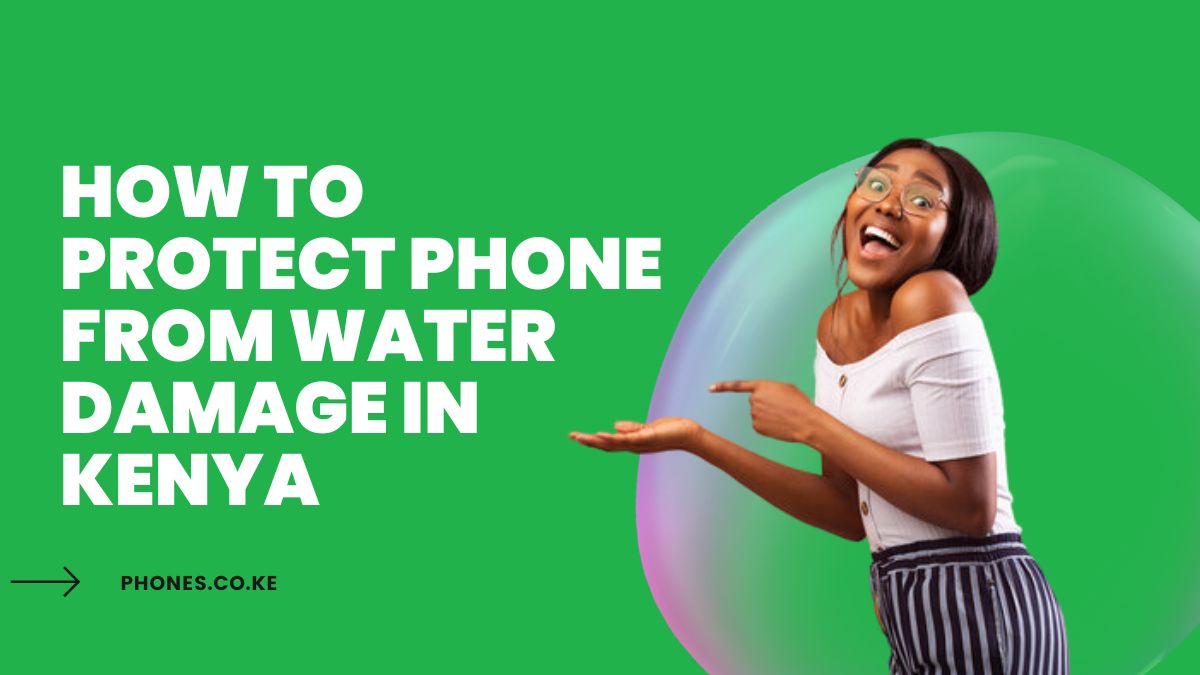How to Protect Phone from Water Damage in Kenya Leave a comment
Water damage is a common and costly issue for phone owners in Kenya. With unpredictable weather patterns, accidental spills, and proximity to water bodies, protecting your phone from water damage is essential. This comprehensive guide will equip you with the knowledge and strategies to safeguard your device and ensure its longevity.
The Risks of Water Damage in Kenya
Kenya’s diverse climate poses unique challenges for phone protection. The coastal regions experience high humidity, while the highlands often receive heavy rainfall. These conditions increase the likelihood of water exposure and subsequent damage to your phone.
Common Scenarios Leading to Water Damage
- Accidental Spills: Spilling liquids on your phone while working, eating, or socializing is a frequent occurrence.
- Rain Exposure: Walking or commuting during rain showers can leave your phone vulnerable to water damage.
- Proximity to Water Bodies: Living near lakes, rivers, or the ocean increases the risk of accidental submersion.
- Humidity: High humidity levels can lead to condensation inside your phone, potentially causing internal damage.
Consequences of Water Damage
- Short Circuits: Water can disrupt the electrical pathways in your phone, causing short circuits and malfunctions.
- Corrosion: Prolonged exposure to moisture can corrode internal components, leading to permanent damage.
- Data Loss: Water damage can corrupt your phone’s storage, resulting in the loss of valuable data such as photos, videos, and contacts.
- Expensive Repairs: Repairing a water-damaged phone can be costly, and sometimes, the damage may be irreversible.
Preventive Measures to Protect Your Phone from Water Damage
a). Invest in a Waterproof Case
A waterproof case provides a physical barrier between your phone and water, offering excellent protection against accidental spills, rain, and submersion.
Look for cases with high Ingress Protection (IP) ratings, such as IP67 or IP68, which indicate their water resistance capabilities.
b). Utilize a Screen Protector
A screen protector not only guards against scratches but also adds an extra layer of defense against water damage, especially for minor spills and splashes.
Choose tempered glass screen protectors for maximum durability and water resistance.
c). Keep Your Phone Away from Water Sources
Avoid using your phone near sinks, bathtubs, swimming pools, or other water bodies.
Be mindful of placing your phone on wet surfaces or near open containers of liquids.
d). Be Cautious During Rainy Weather
If you must use your phone in the rain, consider using a waterproof pouch or keeping it sheltered under an umbrella.
Avoid taking calls or texting while walking in heavy rain, as this increases the risk of water exposure.
e). Dry Your Hands Before Handling Your Phone
Moisture from your hands can seep into your phone’s ports and openings, potentially causing damage.
Make sure your hands are completely dry before using your phone, especially after washing them or being in contact with water.
Immediate Steps to Take if Your Phone Gets Wet
Turn Off Your Phone Immediately
Powering off your phone prevents short circuits and minimizes the risk of further damage.
Resist the urge to check if it still works, as this can exacerbate the problem.
Remove the Battery (If Possible)
If your phone has a removable battery, take it out immediately.
This disconnects the power source and reduces the chance of electrical damage.
Dry the Exterior Thoroughly
Use a soft, absorbent cloth to wipe away any visible water from the phone’s surface.
Pay close attention to the ports, buttons, and speaker grilles.
Do Not Use a Hair Dryer or Heat
Applying heat to your phone can damage its internal components and worsen the water damage.
Avoid using hair dryers, ovens, or direct sunlight to dry your phone.
Place Your Phone in a Desiccant Material
Desiccants such as silica gel packets or uncooked rice can absorb moisture from your phone.
Bury your phone in a container filled with desiccant and leave it for at least 24-48 hours.
Seek Professional Repair if Necessary
If your phone shows signs of water damage, such as a malfunctioning screen, distorted audio, or difficulty charging, seek professional repair services.
Authorized repair centers have the expertise and tools to diagnose and fix water-damaged phones.
Remember: Taking proactive steps to protect your phone from water damage in Kenya can save you from costly repairs and data loss.
Comparison of Waterproof Cases
| Feature | Case A | Case B | Case C |
|---|---|---|---|
| IP Rating | IP67 | IP68 | IP65 |
| Material | TPU and Polycarbonate | Silicone and Plastic | TPU |
| Submersible Depth | 1 meter for 30 minutes | 2 meters for 60 minutes | Splash-proof only |
| Touchscreen Sensitivity | Excellent | Good | Average |
| Additional Features | Built-in screen protector | Floating strap | Slim design |
| Price | Ksh 2,500 | Ksh 3,000 | Ksh 1,500 |
Conclusion
Protecting your phone from water damage in Kenya requires a combination of preventive measures, quick action in case of accidents, and awareness of the risks. By investing in protective accessories, practicing safe phone habits, and knowing how to respond to water exposure, you can significantly reduce the chances of water damage and ensure the longevity of your valuable device. Remember, prevention is key, and taking proactive steps today can save you from costly repairs and data loss in the future.
Remember, water damage can happen to anyone, but with the right knowledge and precautions, you can protect your phone and enjoy its full potential in Kenya’s diverse climate.
Protect your phone from water damage in Kenya and keep your device safe and functional for years to come!
Read also:



